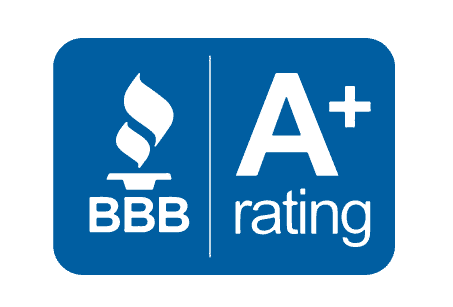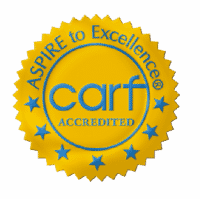
Trafalgar’s Editorial Team
This Article is Written By Amber Stephenson, MSW, RSW, CSAT
Cognitive Processing Therapy (CPT)
Cognitive Processing Therapy (CPT) is a type of cognitive behavioural therapy (CBT) that was developed to address symptoms of post-traumatic stress disorder by Dr. Patricia Resick.
This type of therapy is used in treating or reducing the impact of trauma symptoms; it has been found to be effective in treating clients with military and first responder trauma, victims of domestic violence, childhood trauma, sexual assault or other interpersonal traumas, as well as individuals who have natural disasters or experienced war or violence as civilians.
CPT is based on the cognitive behavioural system which posits that our thoughts, emotions, physiological symptoms and behaviours are interconnected and operate continually based off changes in each.
In this system, some sort of external stimuli reminds us of the initial traumatizing event; we feel some sort of emotion, our body responds to this emotion with physical cues, and our thoughts are directed to the situation and how we feel, along with an urge to respond.
Everyone, even people without trauma, have this system operating at all times, oftentimes quite automatically, without our awareness.
Where people with trauma histories may differ is that their bodies are hypersensitive to changes in their environment (a result of the symptom of hypervigilance), thus stimuli are often more emotionally charged, which means more intense emotions, and thoughts tend to gravitate toward negative beliefs about themselves, others, or the world especially as it relates to safety, control, and trust.
And whether we have trauma histories or not, the behaviour urges we have as a result of this system may not always be urges to do the most effective, healthy, or helpful thing for ourselves.
People with trauma histories can likely identify that the urges in these cycles are related to avoidance of some sort – whether it is through using substances, isolating/withdrawing, lashing out or something else – as avoidance is a key trait in those dealing with trauma symptoms.
From a cognitive approach, trauma is something that our brains cannot process as it does not neatly fit in with what we know about ourselves, others, or the world; in light of this, when a traumatic event occurs, our brain may move to self-blame or blaming others (anger), as it attempts to regain control and predictability – two things our brains love, but two things that are by definition, not accessible in a traumatic event.
In a nutshell, CPT looks to provide the psychoeducation and insight needed to expand our understanding of the event so our brain can more neatly file it away.
CPT is a manualized treatment, meaning that there is a specific protocol for administering it; the manual suggests 12 sessions however recognizes that a range of 8-16 sessions provides flexibility depending on the severity of symptoms and how the client responds.
The first step in this process is writing the impact statement of your trauma; this involves a brief narrative component of what occurred, but also includes what you thought of the situation and how you tried to make sense of it; this likely includes themes of self-blame, taking on responsibility that may not be yours to carry, or denying reality to name a few.
Clients learn how to identify thoughts and emotions, along with how they are connected. Once ready, clients also begin to identify the behaviour urges they have as a result of certain thought-emotion connections.
Clients use a specific exercise to draw insight into these connections, and to identify the underlying thoughts they have a result of the trauma – the negative ones about self, others and the world mentioned above.
In CPT, these thoughts are called ‘stuck points’. We call them stuck points as they are often the thoughts that our brain has created as a result of the trauma (they at one point provided us the illusion of predictability or control), and often keep us stuck in traumatic responses.
Another important concept in CPT is the distinction between “natural emotions” and “manufactured emotions”.
These can be exemplified here:
Natural Emotion: event = emotion
Manufactured emotion: event = I tell myself something about the event = emotion
It is important to note that what we tell ourselves about the event is not conscious; it is often something we do unconsciously to protect ourselves.
Let’s look at losing a loved one as an example ‘event’. The natural emotion following this (as product of chemicals and hormones in our brain) is sadness. Oftentimes, this sadness is extremely overwhelming and you may relate to losing someone and feeling angry. In this case, we could consider that perhaps the anger is manufactured. Meaning that in order to protect myself from the overwhelming sadness, I may find myself telling myself, “someone should have done something”, “this is (someone’s) fault”, or even moving to guilt via beliefs such as “I could have done more”, “this is my fault”. The work may not be in denying all anger, but in allowing both anger and sadness to coexist.
CPT provides tools to examine the natural emotion associated with certain events or beliefs. The hard part of this is that natural emotions are often very intense, and do have a peak that can feel very difficult to manage; however, natural emotions do dissipate.
At the peak, they may feel like a giant bonfire with intense heat and colour, however, like a bonfire left unfed but managed, the fire safely goes out.
With manufactured emotions, the ‘things we tell ourselves’ damage us in two ways;
1) They cover up the natural emotions that remain unprocessed in our bodies and
2) They keep that fire burning; each time our brains engage in a stuck point, it is like another log being thrown on the emotional fire.
In this way, that emotional fire never peaks nor dissipates and we are left with the intense (manufactured) emotion sometimes for a very, very long time.
Once this insight is built, the next step begins: cognitively processing the thoughts associated with the traumatic event.
This is where a more traditional CBT approach is utilized, in that with guidance, clients pull apart and challenge the stuck points using a CBT technique called socratic questioning.
At no point is the intention to convince clients that their thoughts are wrong, or to convince them of the opposite thought, but instead the aim of this approach is creating cognitive flexibility – the ability to understand that while our brains like to simplify in times of high stress, the simplified rationales we create are not always accurate; our lives and traumatic events are much more nuanced.
This cognitive flexibility is understood as being integral in treating the rigidity that the PSTD creates in the brain and uses to maintain the trauma responses.
The final step in CPT is to re-write your impact statement (usually 6-20 weeks after starting the treatment) using the knowledge you now have and the understanding of the complexity of the situation.
This often results in lowered anger, shame, guilt, and self-blame – or, lowered ‘manufactured emotions’ and over time, less intense ‘natural emotions’.
CPT has been found effective both in group and individual psychotherapy. In CPT, between session work is integral to the process and must be completed for successful outcomes.





